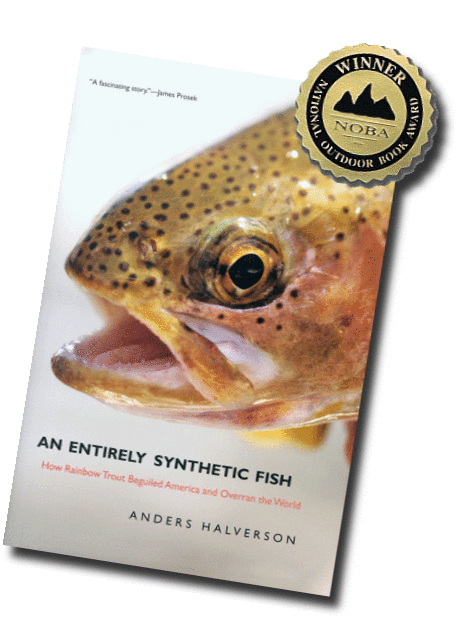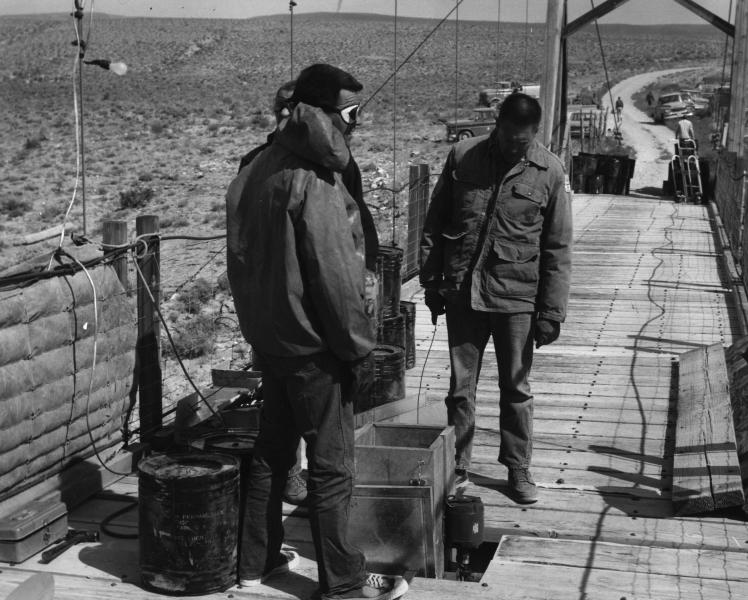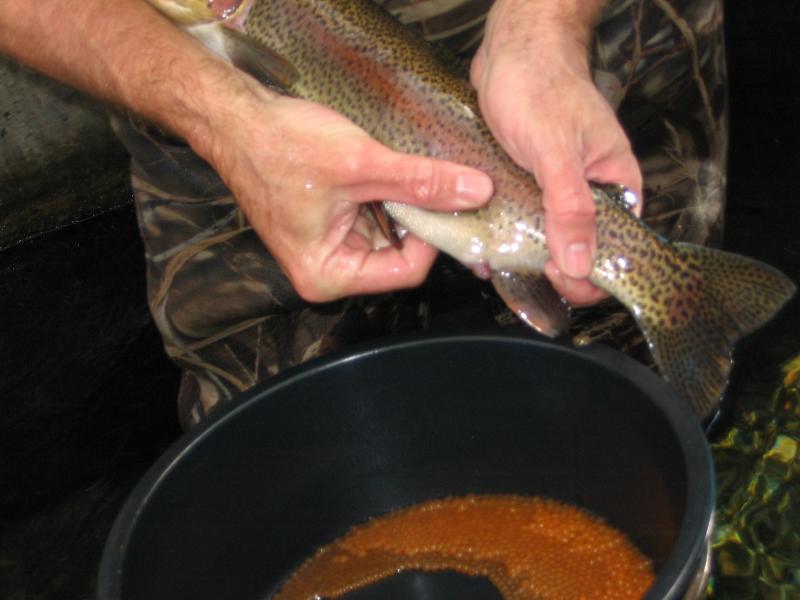Entirely Synthetic Fish
An Entirely Synthetic Fish
About Reviews Additional Material

Halverson entertainingly introduces some of the most tangled questions in conservation biology: What is a species? What is native? What is natural? What is wild?
– Science, April 2, 2010
With prose as engaging as it is thoughtful, Halverson has crafted an absorbing cautionary tale of ecological trial and error, documenting our tardy but increasing understanding of biological interdependence and its immeasurable value.
– Washington Post, February 28, 2010
This isn’t one of those books that only fly-fishermen will like. An Entirely Synthetic Fish is a compelling cautionary tale about how the systematic introduction and massive cultivation of rainbow trout for fishing changed America’s waterways, both for better and for worse.
– Outside, December 2010
About the book
Suppose that more than a century ago, U.S. government officials became concerned democracy itself was at risk because men seemed to be less virile. Suppose that to reverse this trend they decided to populate streams, rivers, and lakes with “an entirely ‘synthetic’ fish”—quarry with which Americans could rediscover their abilities to capture and kill animals. And suppose that, up to the present, these creatures were still being produced and distributed on a massive scale, sometimes even being trained like gladiators and pumped full of the same supplements as the best human athletes so that they would provide a better fight.
Such is the true story of the rainbow trout. Sometimes vilified for their devastating effects on the native fauna, sometimes glorified as the preeminent sport fish, the rainbow trout is the repository of more than a century of America’s often contradictory philosophies about the natural world. Exhaustively researched and grippingly rendered by award-winning journalist, aquatic ecologist, and lifelong fisherman Anders Halverson, this book chronicles the discovery of rainbow trout, their artificial propagation and distribution, and why they are being eradicated in some waters yet are still the most commonly stocked fish in the United States.
Reviews
Halverson entertainingly introduces some of the most tangled questions in conservation biology: What is a species? What is native? What is natural? What is wild?
– Science, April 2, 2010
With prose as engaging as it is thoughtful, Halverson has crafted an absorbing cautionary tale of ecological trial and error, documenting our tardy but increasing understanding of biological interdependence and its immeasurable value.
– Washington Post, February 28, 2010
This isn’t one of those books that only fly-fishermen will like. An Entirely Synthetic Fish is a compelling cautionary tale about how the systematic introduction and massive cultivation of rainbow trout for fishing changed America’s waterways, both for better and for worse.
– Outside, December 2010
Make no mistake, this book is a major event in the history of angling and ecological analysis. It needs to become the stuff of every angler’s conversation and practice. And it’s such a pleasure to read!
– Gordon Wickstrom, American Angler, May/June 2010
One of the year’s most delightful works of nonfiction, a slim, quietly compelling volume that combines the leisurely literary style of an essayist with the tenacious curiosity of an investigative reporter
– Bruce Barcott, Yale Alumni Magazine, May/June 2010
Great read. I’m in the middle of it. Drop everything and buy it.
– Ted Williams, Fly Rod and Reel, March 18, 2010
Halverson is a thorough researcher and a fine storyteller. . .It’s an engrossing read – one that’s hard to put down, and just as hard to forget. . .
– Tom Chandler, Trout Underground, December 13, 2010
Halverson treats the history of rainbow trout like a detective story and interviews or writes about a cast of fascinating characters.
– The Quarterly Review of Biology, June, 2012
Halverson weaves a rainbow of colorful characters into a historically rich narrative and provides some powerful insights that will interest a wide readership
– Bioscience, March, 2012
A remarkably well-researched and well-plotted story that’s part science, part history, and part sociology . . . all of which are very interesting and entertaining.
– Kirk Deeter, Angling Trade, September 2010
A pivotal book, one to separate cleanly those who have read it from those who have not.
– Gordon Wickstrom, The American Fly Fisher, Summer 2010
Intelligent, fair-minded and uncommonly readable. . .the book’s central appeal is in fact the story itself, or the stories themselves.
– Pittsburgh Post-Gazette, July 25, 2010
A well-paced, completely absorbing tale of how man and trout have changed the landscape of the planet.
– Ralph Cutter, California Fly Fisher
Halverson’s book is a microhistory, an examination of America’s involvement with a favored fish that sheds light on broader truths regarding our recent relationship with the natural world.
– Chronicle of Higher Education, February 28, 2010
The book tells how, with the best of intentions and the worst of outcomes, rainbow trout took over American rivers, lakes and streams.
– Seattle Times, February 27, 2010
Halverson traces the history, cultivation, and dissemination of rainbow trout, the politics of sport fishing, and various other well-intended programs with unintended consequences.
– Samuel Snyder, Orion, July/August 2010
Halverson’s history of trout fishing in America, therefore, comes as something of a revelation
– Laurance A. Marschall, Natural History, February 2011
An enthralling and sometimes appalling story.
– New Scientist
A fascinating story of man’s urge to cultivate and disseminate a beautiful coldwater fish—at times to the detriment of native species but also the joy of anglers who would not otherwise have the opportunity to catch a trout. A gripping blend of early American history, discussions on taxonomy, and questions of how best to preserve wildness and the indigenous in a world where the human relationship to Nature is complex and always changing.
– James Prosek, author of Trout of the World
In this brilliant study, Anders Halverson illuminates the astonishing history of the rainbow trout, a native of the tributaries of eastern and western Pacific coastal rivers, but introduced to at least 45 countries, and every continent except Antarctica. But why does he call it ‘an entirely synthetic fish?’ You’ll have to read this remarkable book for the answer.
– Richard Ellis, author of Tuna: A Love Story and On Thin Ice: The Changing World of the Polar Bear
The historical research, personal interviews, and putting it together has produced an outstanding piece of work.
– Robert Behnke, Professor Emeritus, Colorado State University, and author of Trout and Salmon of North America
Anyone interested in life as metaphor will find here the fascinating historical story of how different people saw their highest ideals and aspirations through the lens of a single, uncommonly compelling fish. And like democracy—but with perhaps more success—they spread it around the world. This unusually well-written, interesting book deserves a place of honor for everyone who sees in trout more than ‘just’ a fish.
– Carl Safina, author of Song for the Blue Ocean, Eye of the Albatross, and The View From Lazy Point
A small book that could influence some big management issues if the right people read it.
– Peter Moyle, Professor of Fish Biology, UC Davis and coauthor of Fishes: an introduction to ichthyology
This book rewards readers in two equally significant ways. First, it entertains us with stories of intrinsic interest and even mind-stretching improbability. Second, it invites us to be smarter and more congenial citizens, more inclined to think productively about our environmental challenges and dilemmas, and more prepared to rise above faction and return to regarding ‘the public good.’
– Patricia Nelson Limerick, Faculty Director of Center for the American West, and author of The Legacy of Conquest: The Unbroken Past of the American West and Something in the Soil: Legacies and Reckonings in the New West
 The U.S. Fish Commission and the Early Days of Fish Culture
The U.S. Fish Commission and the Early Days of Fish Culture  Aerial Fish Stocking (and Removal) in the Sierra Nevada
Aerial Fish Stocking (and Removal) in the Sierra Nevada  The Green River ‘Rehabilitation’ of 1962
The Green River ‘Rehabilitation’ of 1962  Fish Culture Today
Fish Culture Today